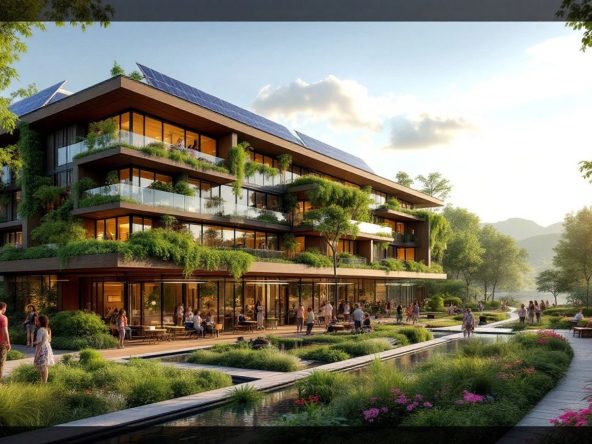Residential sales in the Eastern Economic Corridor (EEC) have seen a significant decline in the second quarter of 2024, primarily due to the shuttering of factories in key provinces. This downturn has raised concerns about the future of housing demand in these industrial zones.
Key Takeaways
- New residential sales in EEC provinces dropped to 5,132 units in Q2 2024.
- The total value of these sales was 16.8 billion baht, the lowest since Q1 2022.
- The decline is attributed to factory closures in Chon Buri and Rayong.
- Low-rise housing in Rayong has a projected sell-out time of 29 months.
Declining Sales Figures
The Real Estate Information Center (REIC) reported that new sales of residential units in the EEC provinces, particularly near industrial estates, have been on a downward trend. In the second quarter of 2024, combined new sales in Chon Buri, Rayong, and Chachoengsao totaled 5,132 units, valued at 16.8 billion baht. This marks a decline from 6,563 units worth 21.7 billion baht in the first quarter, and a significant drop from 7,872 units worth 25.8 billion baht in the fourth quarter of 2023.
Impact of Factory Closures
The closure of large factories in Chon Buri and Rayong has had a profound impact on housing demand. Vichai Viratkapan, acting director-general of the REIC, noted that the demand for condos and townhouses in these areas has decreased for two consecutive quarters. The most affected price range is between 2-3 million baht per unit, particularly in areas close to industrial estates such as Nikhom Amata City-Eastern, Nikhom Hemaraj, and Nikhom Map Ta Phut.
Inventory and Absorption Rates
The inventory of low-rise housing in Rayong is particularly concerning, with a projected sell-out time of 29 months if no new supply is added. The largest supply is found in Nikhom Amata City-Eastern, which has 1,426 units available but only 116 units sold in Q2, resulting in a low absorption rate of 2.7%.
| Location | Total Units | Units Sold | Absorption Rate | Projected Sell-Out Time |
|---|---|---|---|---|
| Nikhom Amata City-Eastern | 1,426 | 116 | 2.7% | 33.9 months |
| Nikhom Hemaraj | 1,093 | 93 | – | – |
| Nikhom Map Ta Phut | 1,065 | 80 | – | – |
Contrasting Trends in Land Prices
Interestingly, while housing demand has plummeted, the price index of vacant land in the EEC has seen year-on-year increases of 3.3% and 8.3% in the first two quarters of 2024. This rise is largely driven by an influx of Chinese investors entering the electric vehicle industry. However, the arrival of major brands like BYD and Changan has not translated into increased housing demand, as these companies rely heavily on automation.
Conclusion
The current state of residential sales in the EEC highlights the challenges faced by the real estate market in industrial zones. With factory closures leading to decreased housing demand, stakeholders are left to ponder the future of residential development in these areas. The contrasting trends in land prices suggest a complex market dynamic that may require strategic adjustments to stimulate housing demand moving forward.




